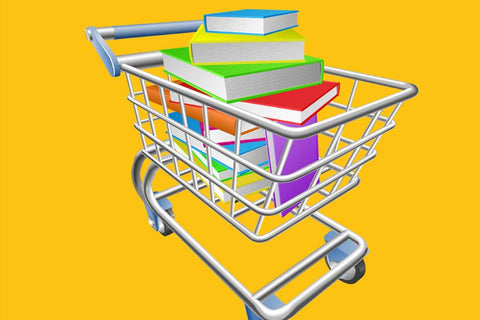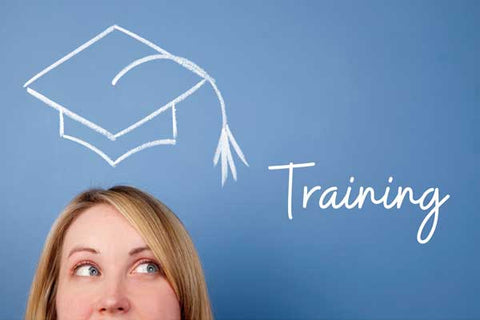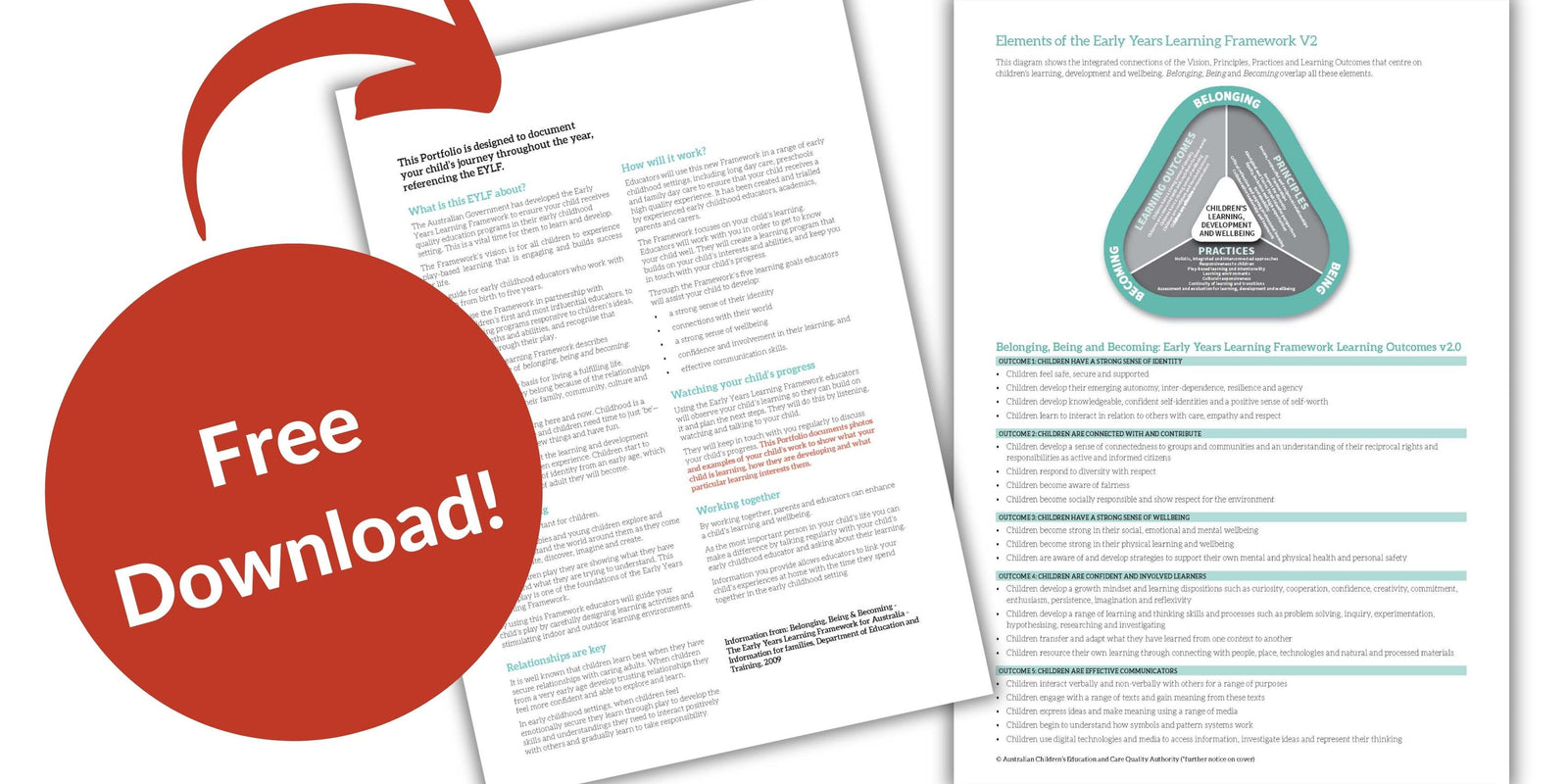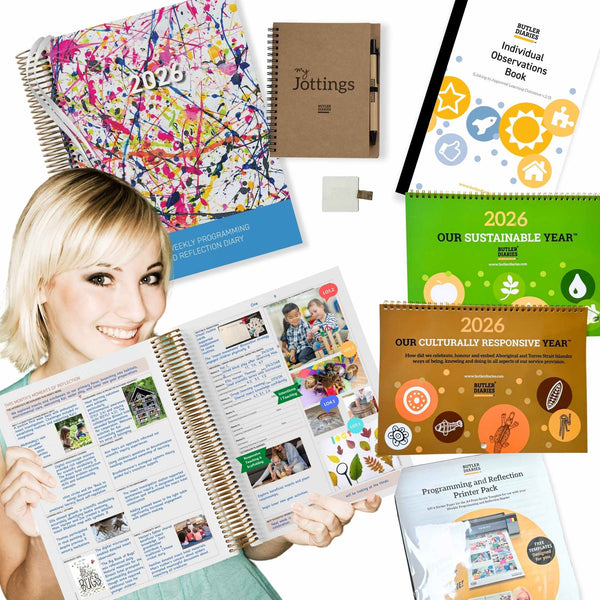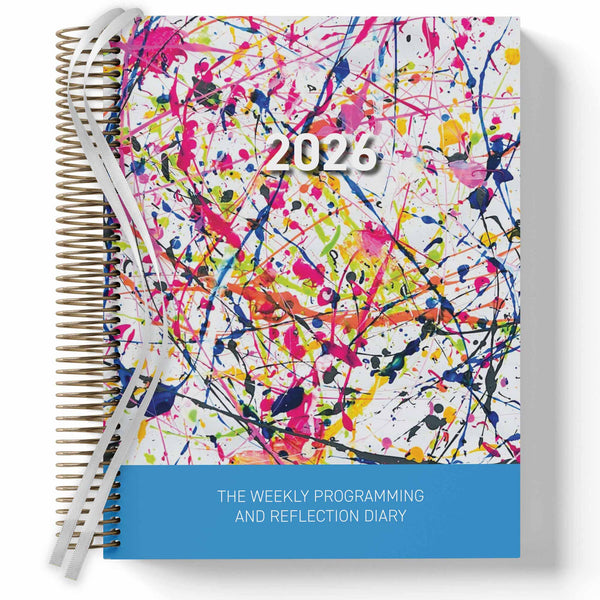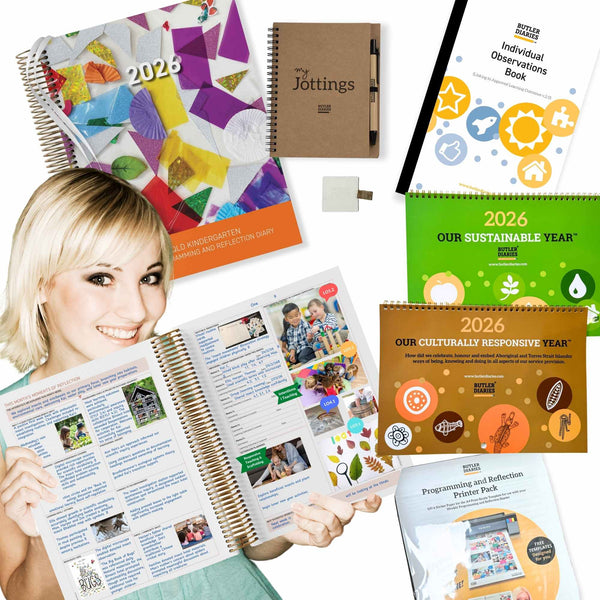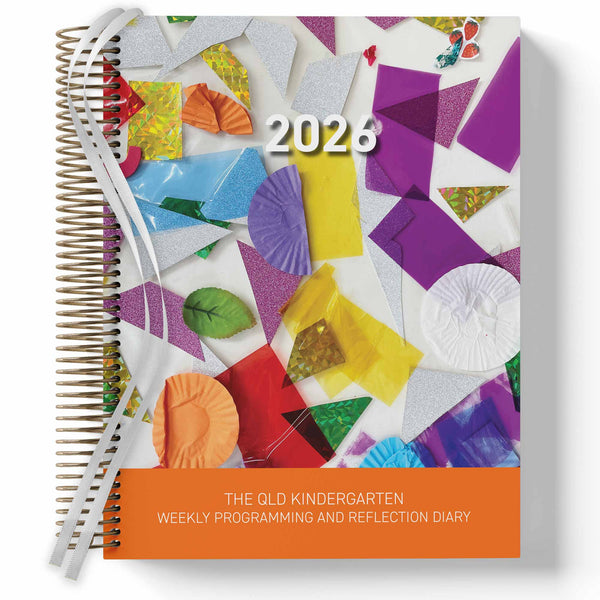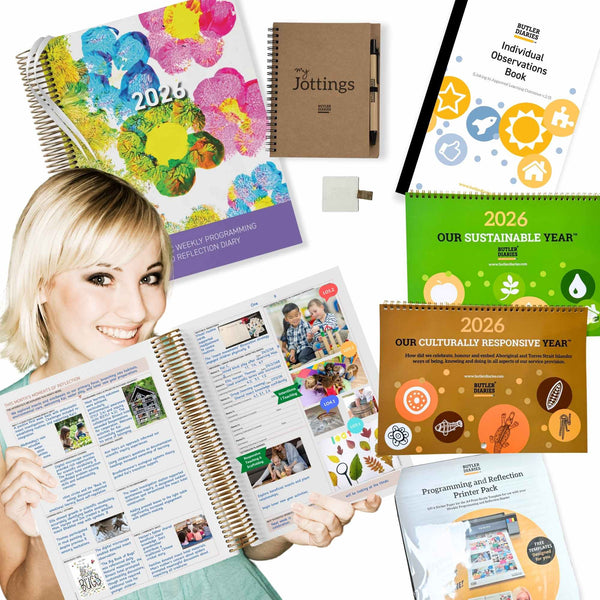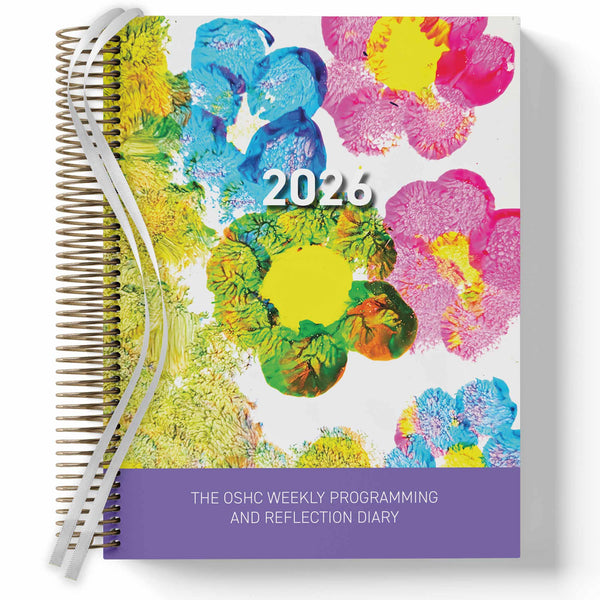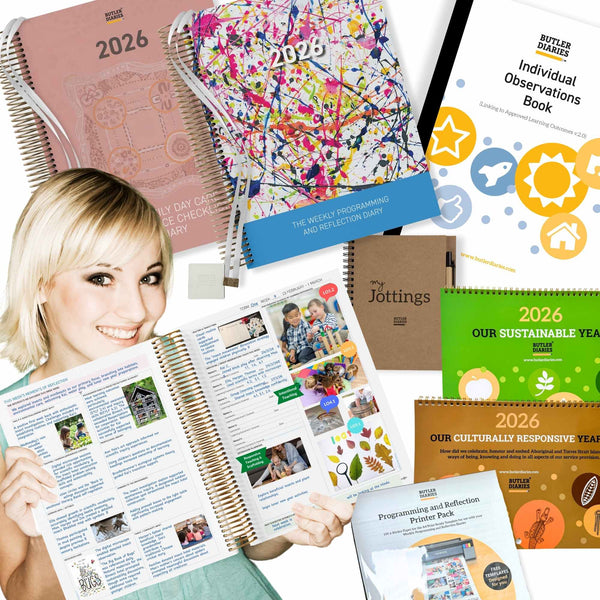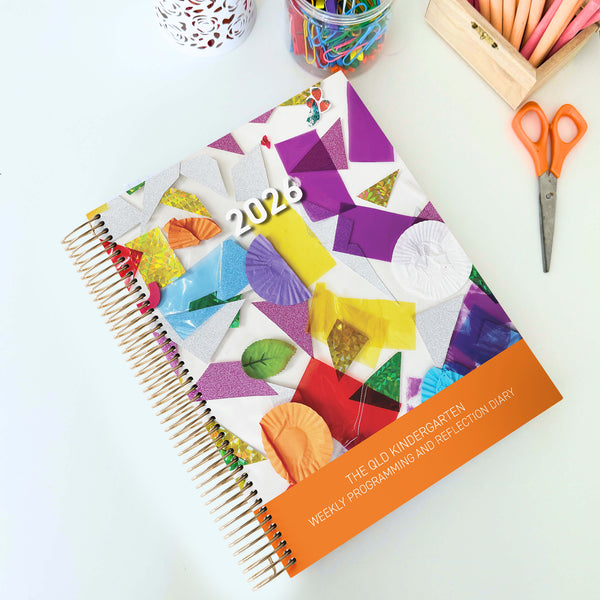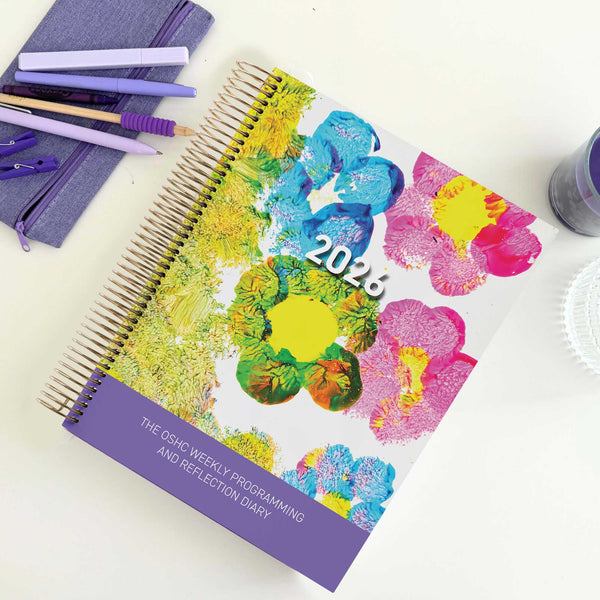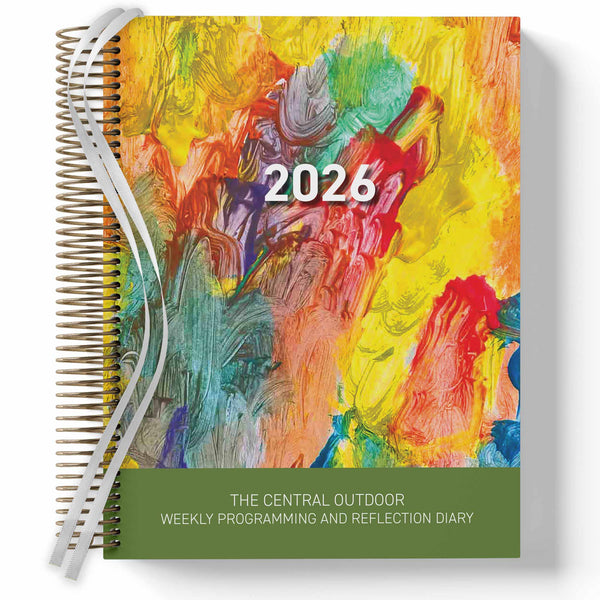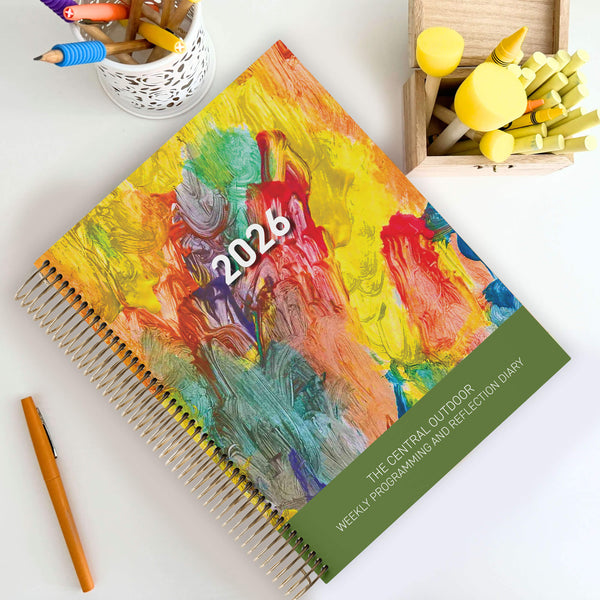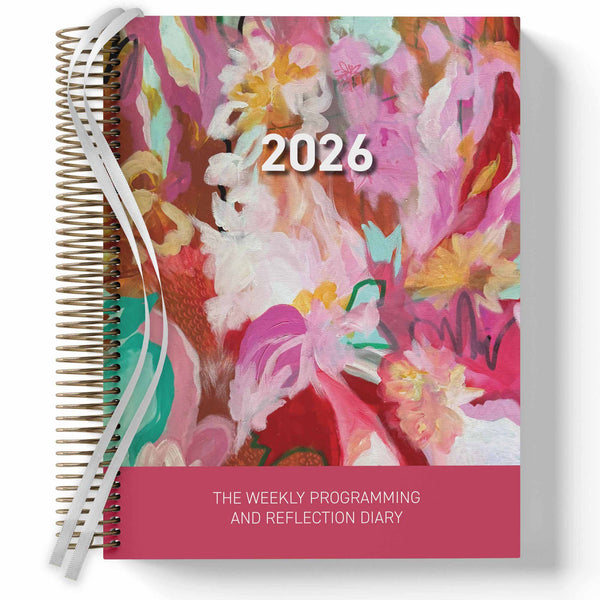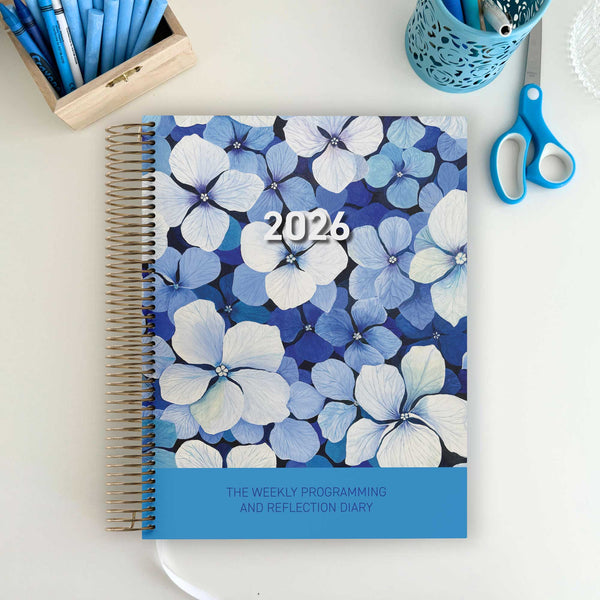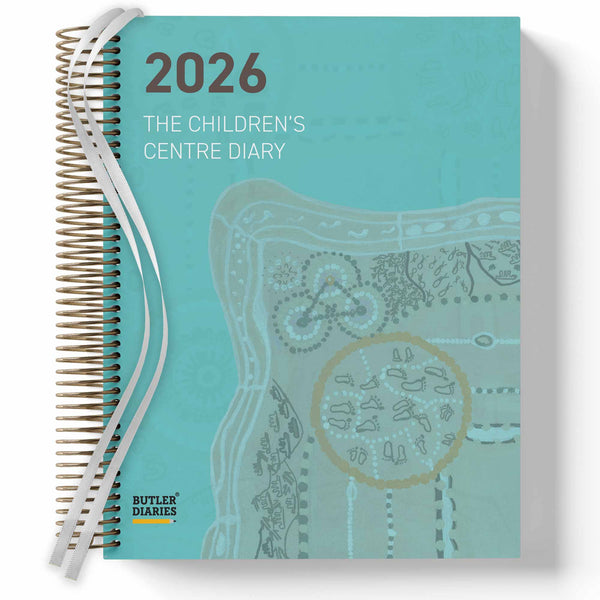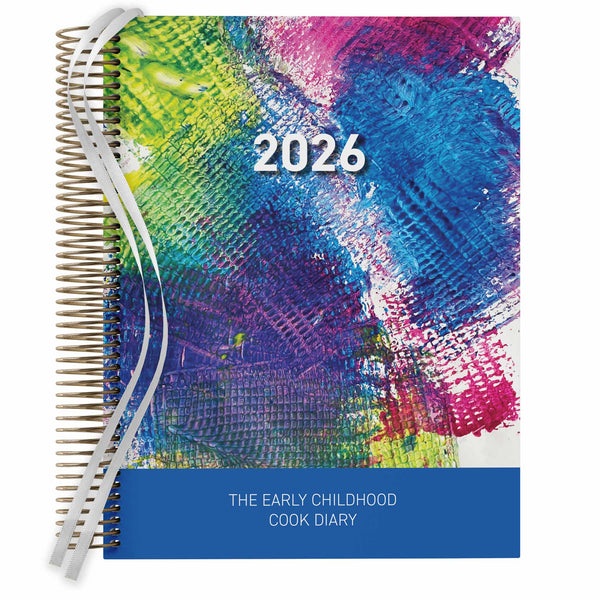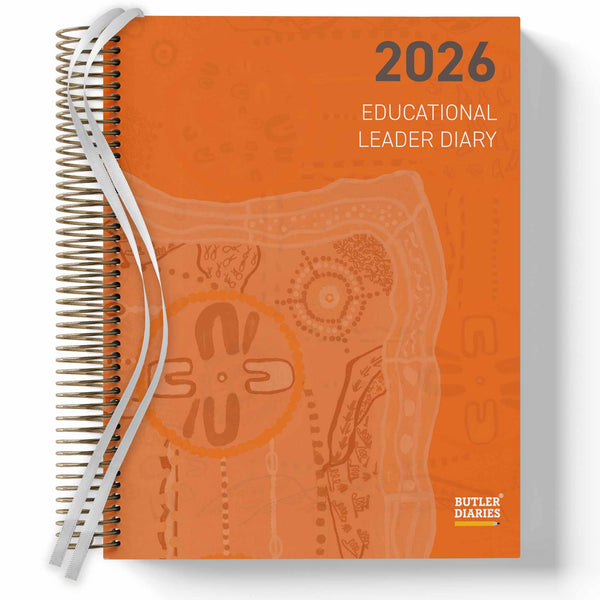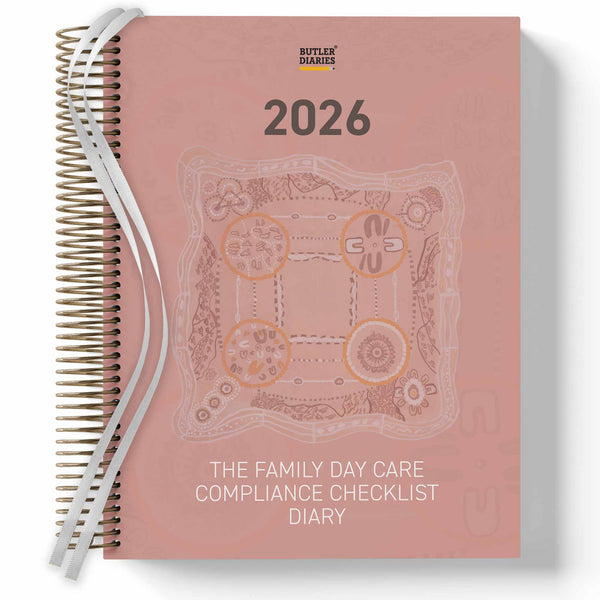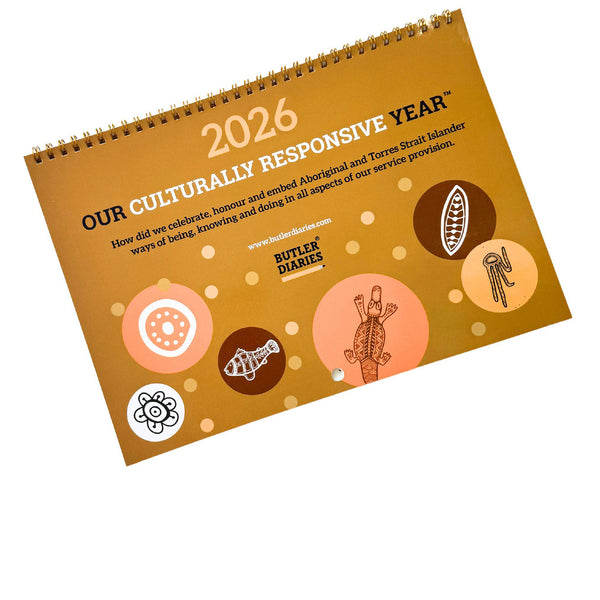In Early Childhood Education and Care (ECEC), the Early Years Learning Framework (EYLF) stands as a guiding beacon. EYLF not only serves as a comprehensive framework for educators but also plays a pivotal role in shaping children's learning journeys. As you know both EYLF and NQS focuses on partnerships with families and their vital role in children's learning. In order to support this relationship, it is vital families are provided EYLF information. One significant place to do this is in children's portfolios. This helps families link children's learning with EYLF outcomes, principles, and practices.
At Butler Diaries, we understand the importance of making complex topics accessible, so we've created an EYLF Portfolio Information Pack for Families that you can include in the front pages of children's Portfolios. The Pack includes the purpose of a child's portfolio and explanations of linking to EYLF, how it works, the importance of play, children's progress, and working together. We've also included a bonus Elements of the Early Years Learning Framework Summary Page to help make it clear.

The Early Years Learning Framework is a nationally recognised framework in Australia for Early Childhood Education. It sets out the principles, practices, and outcomes essential to support and enhance young children's learning from birth to five years of age.
Providing EYLF Information for Families
Families are a crucial part of a child's learning journey, and EYLF recognises this. It provides valuable information for families to understand how Early Childhood Educators are fostering their child's development. Here's how EYLF information benefits families:
-
Transparency: EYLF offers transparency regarding the goals and outcomes of Early Childhood Education. Families can access information about what their child will be learning and achieving during their time in ECEC.
-
Collaboration: It encourages collaboration between educators and families. By sharing EYLF principles and practices, educators and parents can work together to create a supportive learning environment for children.
-
Informed Decision-Making: EYLF empowers families to make informed decisions about their child's education. With a clear understanding of EYLF, parents can actively engage in their child's learning journey and provide meaningful input.
-
Recognition: With an understanding of EYLF and how Early Childhood Educators make the decisions they make, families form an understanding of the importance of Early Childhood Education and recognise your decision-making and practice as more than fun or child minding.
- Play as Learning: The more Families understand the principles and research behind EYLF, the more play is recognised as a learning tool rather than a time filler.
You can help families gain the above benefits by:
- Downloading the FREE EYLF Portfolio Information Pages,
- Downloading our FREE Parent Information Sheet on the Butler Method of Programming and Reflection,
- Displaying EYLF Information in your Room, for example, using the EYLF Agency Posters that promote children's agency and recognition of their strengths, interests, and abilities,
- Using the Weekly Programming and Reflection Diaries to display your Program with clear links to EYLF and learning, and
- Using Play Resources that show clear links to EYLF and learning such as our Sustainable Educational Program Cards and other Play-Based Games.
Providing EYLF Information in Children's Portfolios
As well as clear links around your room and in your practice, it is important to integrate EYLF information into children's portfolios. This transforms children's portfolios from just a key aspect of documentation in ECEC to an enriching learning story that families can also understand. Providing clear EYLF information in children's portfolios makes the below visible and clear:
-
Goal Setting: It becomes clear educators use EYLF as a foundation for setting individualised learning goals for each child. These goals are documented in children's portfolios, outlining what educators aim to achieve in collaboration with families and families are able to understand their significant role.
-
Observations and Reflections: Portfolios include observations of children's activities and behaviours, aligning with EYLF outcomes. These observations help educators track children's progress and reflect on their development and ensure families are able to do the same.
-
Evidence of Learning: EYLF information within portfolios serves as evidence of a child's learning journey. It showcases how educational practices align with EYLF principles and how children are actively engaged in the framework.
You can also get children collaborating on their EYLF outcomes:
My Amazing Year - Portfolio Learning Journal for Children provides children a platform for creating their own goals and sharing their learning with links to EYLF. This makes a perfect Portfolio or addition to a more formal portfolio of observations and learning data. Children are given the opportunity to have more agency and control of their learning and goals by sharing and documenting their interests and experiences with links to EYLF.
EYLF information plays a dual role: it empowers families with knowledge about their child's education and serves as a guiding compass for educators in documenting children's learning journeys. By integrating EYLF into children's portfolios, educators ensure that every child's unique narrative is celebrated and documented in a way that reflects the principles of EYLF. It also shows your commitment to Quality Area 6 - Collaborative Partnerships with Families and Communities.
At Butler Diaries, we understand the dedication required in ECEC. Our commitment to your success means providing accurate and informed insights while keeping the complexities of the profession effortless to understand.
Please download your FREE EYLF Portfolio Information Pack below
